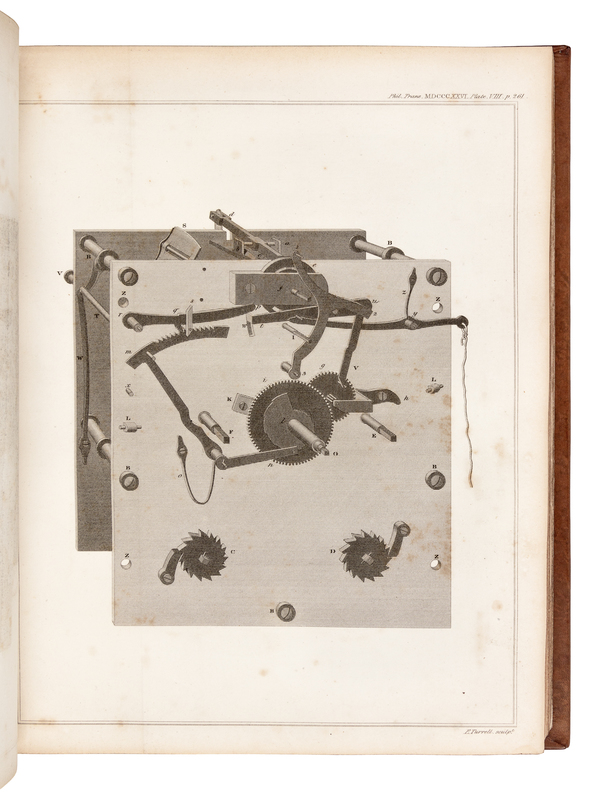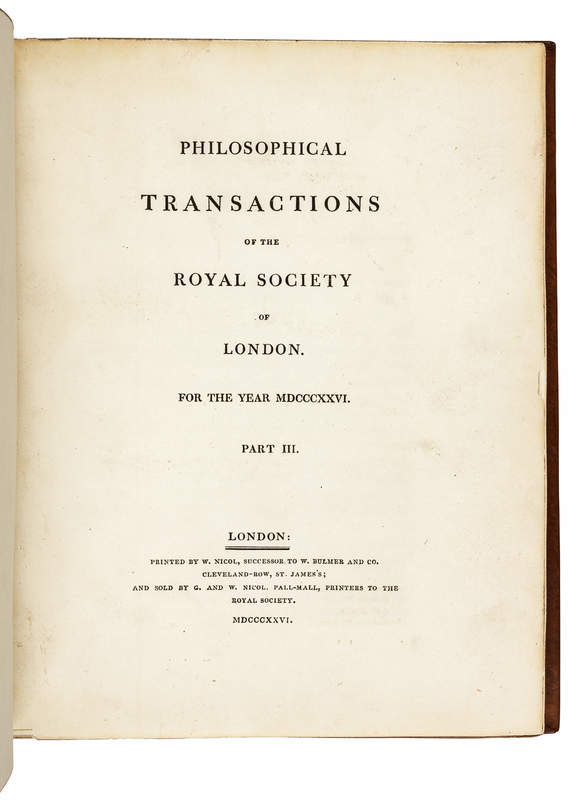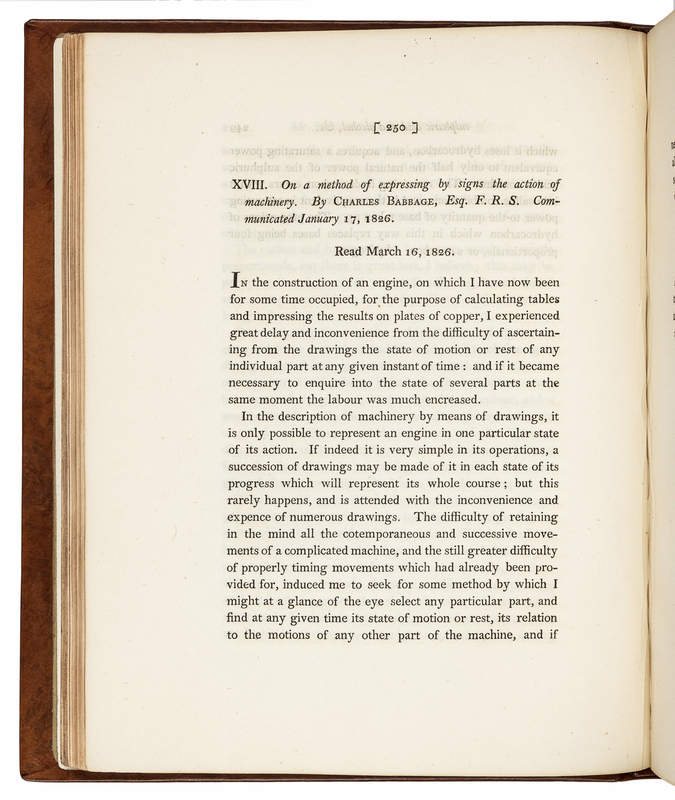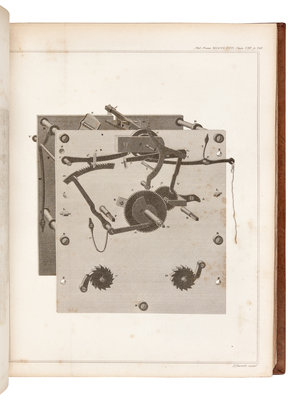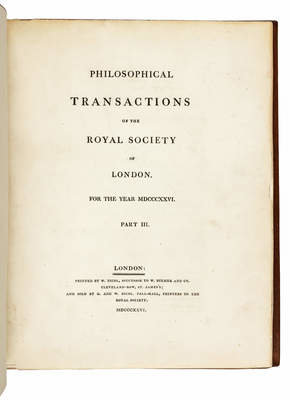Lot 1
BABBAGE, Charles (1791-1871). “On a method of expressing by signs the action of machinery.” – “On electrical and magnetic rotations.” In: Philosophical Transactions of the Royal Society of London for the year MDCCCXXVI, Vol. 116, Part 3, pp. 250-65 (first work); pp. 494-528 (second work). London: W. Nicol 1826. FIRST EDITION.
Sale 714 - Library of a Midwestern Collector
Nov 5, 2019
10:00AM CT
Live / Chicago
Own a similar item?
Estimate
$2,000 -
3,000
Price Realized
$1,500
Sold prices are inclusive of Buyer’s Premium
Lot Description
BABBAGE, Charles (1791-1871). “On a method of expressing by signs the action of machinery.” – “On electrical and magnetic rotations.” In: Philosophical Transactions of the Royal Society of London for the year MDCCCXXVI, Vol. 116, Part 3, pp. 250-65 (first work); pp. 494-528 (second work). London: W. Nicol 1826.
4to. 19 engraved plates (including 5 folding). Babbage: 4 engraved plates, including a folding table showing Babbage’s system for mechanical notation (first paper), and 1 engraved plate illustrating his second paper. (Some minor spotting and offsetting.) Modern calf antique.
FIRST EDITIONS, journal issues. The first paper comprises the first publication of Babbage’s important exposition of his system of mechanical notation which enabled him to describe the logic and operation of a complex piece of machinery on paper. “More than one hundred years later, in the 1930s, when developments in logic were applied to switching systems in the earliest efforts to develop electromechanical calculators, Claude Shannon demonstrated that Boolean algebra could be applied to the same types of problems for which Babbage had designed his mechanical notation system” (Norman).
His method “led him to develop a mechanical notation which provided a systematic method for labeling parts of a machine, classifying each part as fixed or moveable; a formal method for indicating the relative motions of the several parts which was easy to follow; and means for relating notations and drawings so that they might illustrate and explain each other. As the calculating engines developed the notation became a powerful but complex formal tool. Although its scope was much wider than logical systems, the mechanical notation was the most powerful formal method for describing switching systems until Boolean algebra was applied to the problem in the middle of the twentieth century. In its mature form the mechanical notation was to comprise three main components: a systematic method for preparing and labeling complex mechanical drawings; timing diagrams; and logic diagrams, which show the general flow of control" (Hyman, Charles Babbage, 1982, p. 58).
The second paper is on the magnetic properties of matter. The volume also contains contributions by Herschel, Davy, Faraday and others. Origins of Cyberspace 37; Tomash & Williams B33 & B21; Van Sinderen 27 & 28.
Condition Report
Contact Information
Auction Specialist
